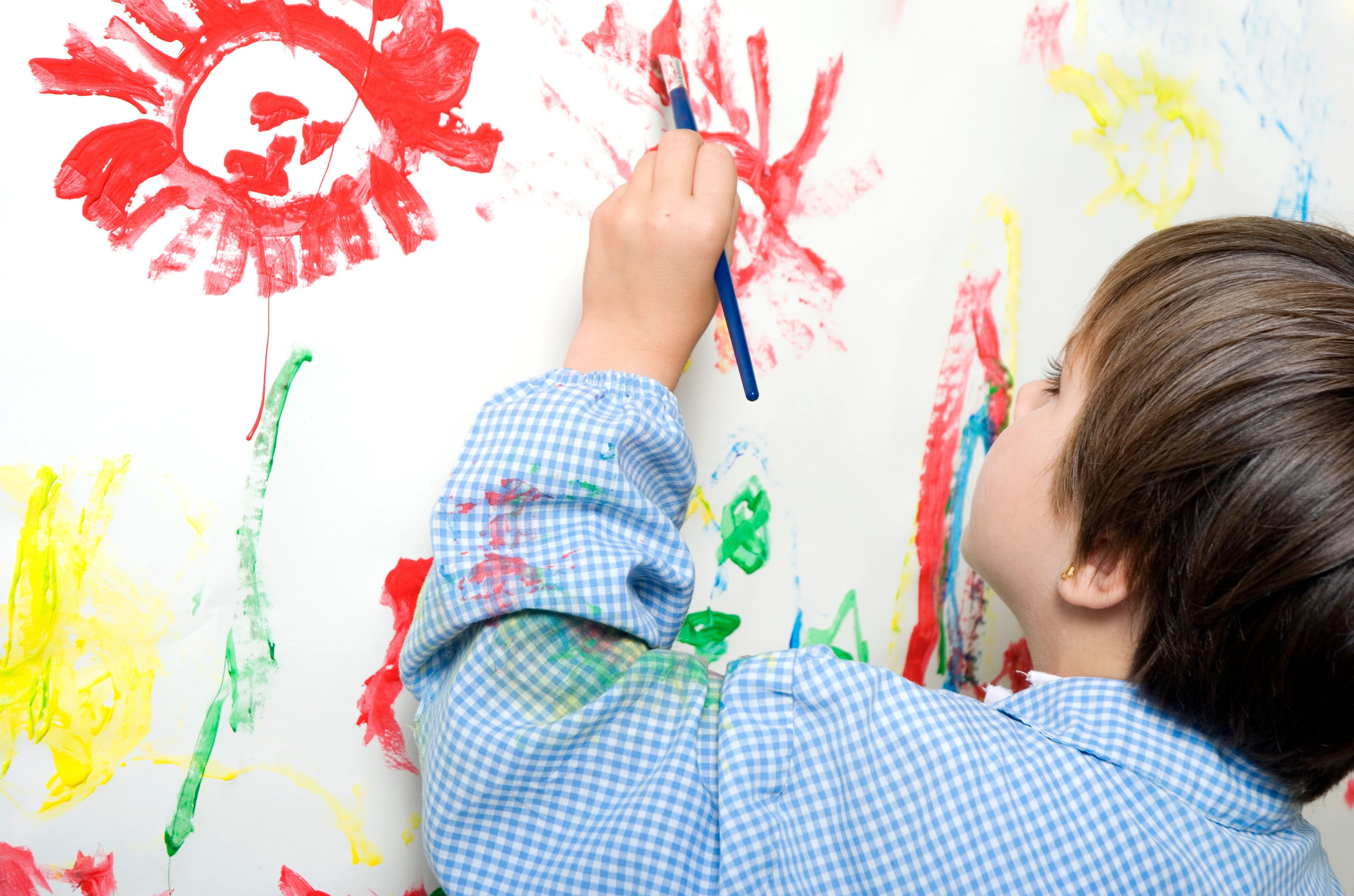Charlotte Davies, Early Years Wales Marketing and Communications Co-ordinator and proud 'lefty' with some additional help from fellow Early Years Wales lefties has put together some hints and tips to support right-handed parents & practitioners raising a left-handed child.
How many left-handed grown-ups can identify with the following...
"Growing up the struggle was real – never being able to use a fountain pen properly, smudging the ink as you write, knocking elbows with the person next to you…the school scissors still give me nightmares! However, as far as I'm concerned there are no disadvantages to being left-handed, only advantages which far outweigh being a 'righty'!”
If you are a right-handed parent or practitioner that has found yourself blessed with a left-handed child to raise, the following facts, hints and tips have been put together to help you understand the some of the differences your child is facing as they begin to develop and explore the world they have been born into.
1. The in-crowd
Did you know only seven to ten per cent of the world's population are left-handed? Putting us in good company with some very famous and influential lefties – including Prince William, Barrack Obama, Oprah Winfrey, Leonardo da Vinci, Albert Einstein and Neil Armstrong.
2. Congratulations you got lucky!
Studies show that handedness is not an inherited trait, although in families where certain characteristics such as artistic and musical are passed down through generations, it could be determined that genetics do play a small part.
Babies usually start showing a hand preference at about 7 to 9 months old, but they may not make a final distinction until they start school. "Doodling and eating are not fine motor skills requiring premium dexterity, which is why many babies and toddlers, under the influence of rapidly developing brains, switch between using the left and right hands, often masking underlying handedness and leading parents to conclude falsely that their children are ambidextrous," David Wolman writes in A Left-Hand Turn Around the World. "This is a common error among people who associate ambidextrousness with high intellect."
Read more: https://www.oprah.com/relationships/6-tips-for-raising-a-left-handed-child/all#ixzz73PfUwyiV
3. Daydream Believer
Do you often catch your little lefty daydreaming?
It is believed that lefties think with the right side of the brain responsible for music, art, perception, and emotion. It tends to be more abstract and considers the bigger picture. Whereas right-handed people use the left side of their brain which is much more linear and is responsible for speech, language, writing, maths, and science.
© Verywell, 2017
4. Sporting advantage
Left-handed athletes tend to do better in sports because their mainly right-handed opponents are not used to the way they might pitch a ball, hit a ball or throw a punch. If you have a budding left-handed tennis player on your hands they could the John McEnroe or Martina Navratilova's of the future.
You may also be interested in The Early Years Wales Olympic Challenge 2024
In the setting
It may not be obvious at this stage whether children are dominantly left-handed or right-handed. Although it is important to try and identify which hand is more dominant, so you allocate appropriate resources and make your team aware.
First thing to do, is to check with the parents. Although they might not be sure.
A couple simple activities you could try to ascertain are:
- Give the child a toilet roll to look through. The child will generally hold it to the dominant eye.
- Put an item in the middle of a table and note which hand the child uses to pick it up
IMPORTANT: if a child naturally uses their left hand, it is NOT advisable to make them change it.
Teaching left-handed children to write.
- Pencil Grip - left-handed children follow the same pencil grip stages as right-handed children. When they reach the tripod grip, they might hold their pencil more upright to see what they are writing.
© https://lovewritingco.com/blogs/blog/teaching-left-handed-children-how-t...
- Paper Position - position their paper at an angle to stop them for using a hook grip
- Holding a pencil - get them to hold their pencil slightly higher up, about 3cm from the tip. Place a mark on the pencil to help them see where to grip it. This will help them to see what they are writing and also reduce smudging.
- Pencils - if they smudge their writing, you could try using a harder pencil e.g., H or 2H. If they press too hard, try a 2B rather than a HB to reduce writing pressure which can lead to pain
- Left-Handed Letter Formation - left-handed children tend to pull rather than push letters. They might cross the letters f or t from right to left.
- Tips - put patterns, letters and spellings on the right-hand-side of their page. Try to model letter formation using your left hand and sit left-handed children to the left of right-handed children so they don't bump elbows.
- Left-Handed Cutting - left-handed scissors are available to buy for children. You can also get left-handed Easi-Grip scissors if they are working on hand strength.
Ref: https://www.instagram.com/miniwritersclub/
Tying shoelaces
Left-handers do not tie their laces like right-handers. The tying is reversed which makes it very difficult for right-handed parents to teach. There are plenty of resources available that you can buy, download or even make yourselves (like the image below) to help teach your children – left or right-handed to tie their laces.
© https://www.leftyslefthanded.com/Tie_Shoes_Instruction_card_p/605168.htm
If you're completely new to the world of the lefty then 'welcome'! We hope you find what you've just read useful and that it will get you off on the right foot, or should we say left foot when it comes to supporting your little ones!
We're always looking to share your ideas so if you have any other pieces of advice for parents and practitioners or can recommend some useful resources, websites to add to our list below please email: [email protected]
https://en.wikipedia.org/wiki/International_Lefthanders_Day
https://www.oprah.com/relationships/6-tips-for-raising-a-left-handed-child/all
https://lovewritingco.com/blogs/blog/teaching-left-handed-children-how-to-write
https://www.twinkl.co.uk/blog/left-handed-writing-tips-left-handed-handwriting-help-for-parents
http://www.lefthandedchildren.org/
https://www.twinkl.co.uk/event/left-handers-day-usa-2024

